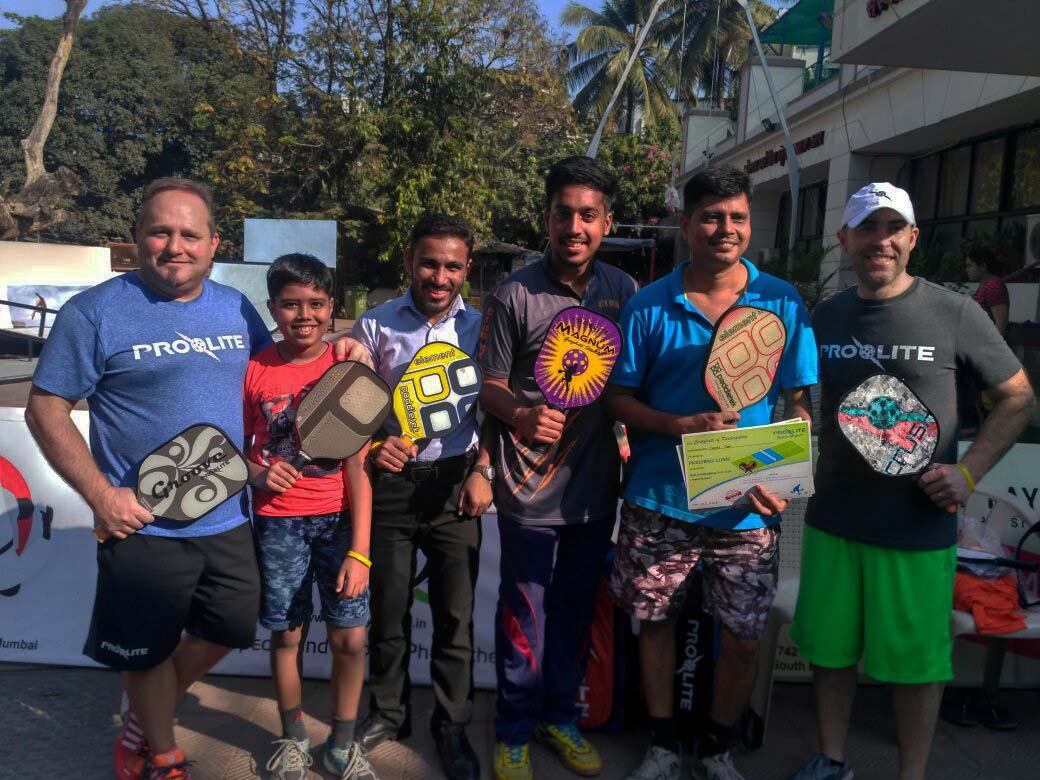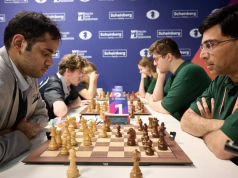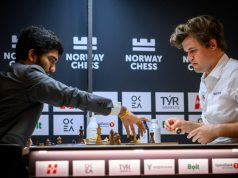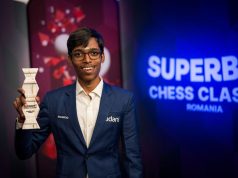Pickleball was invented in 1965 on Bainbridge Island, a short ferry ride from Seattle, Washington. Joel Pritchard, Bill Bell, and Barney McCallum- three friends- found something interesting for their kids to do in summer. They created Pickleball with some handmade equipment and simple rules. The game grew remarkably in the United States of America (USA) and is now growing internationally as well. India is taking up this new sport and that is evident with national and state level tournaments being organized by All India Pickleball Association (AIPA). Recently, Neil Friendenberg, Owner and President of Prolite- the largest manufacturers of Pickleball products- visited India to conduct some workshops and clinics in Mumbai and Jaipur. He was accompanied by Phil Larsson, Director of Public Relations of Prolite. Neil and Phil talked about their experience in India, the developmental aspects of this sport and its future prospects.
-
Involvement with Pickleball—–
Neil Friedenberg: The first time I ever played Pickleball was in the late 1980s.
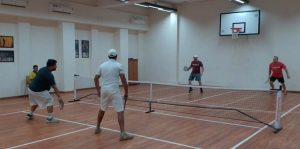
My father, Mark Friedenberg, was a computer analyst at the Weyerhaeuser in Federal Way, Washington. He would often play Pickleball in their newly installed court. In a few days’ time, he got addicted to the game. He used to talk about it at home and it was like a joy to him. We were a very active family and he showed the game to me, my sister. He taught us the rules of Pickleball, the boundaries, and the strategies. That’s how I got involved. I was an avid tennis player so I picked up the game quickly.
Phil Larsson: The weirdness of the name attracted me so much. Its Pickleball….its such a different type of name. I love this game. I live and breathe it. Later, when I got involved with Prolite, I got actively involved in this game.
-
Uniqueness of this game
Phil Larsson: Firstly, according to my theory of understanding, it is an easy sport to learn. So lot of people can come into this sport and quickly turn professional in it. Secondly, it is an addictive sport. Here the ball moves very fast and immense concentration is needed to hit the ball.
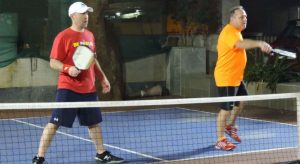
This concentration on the game removes all the stress- personal and professional- out of the mind. So it’s a stress buster and that’s why addictive. And thirdly, the sport is a huge fun. I have seen people coming with serious looks but end up with a broad smile on their face. People connect here, share their laughter, share their joy, share their happiness.
Neil Friedenberg: The uniqueness is, anybody can play this sport-people who played some kind of sport before or people having no experience in sports. In the US, there are many tennis players who take up Pickleball after a certain age and remain in the highest level of competition in their 40s or 50s. I think that attraction of being professional at a higher age keeps bringing players in this sport.
-
Growth of Pickleball in the USA …..
Neil Friedenberg: The foremost reason for growth of Pickleball in the USA is because it has become accessible to people. The biggest part in this, what I find, is people have found places to play. Many tennis courts have been converted to Pickleball court; in schools, in gyms, courts are provided to the people to play at night after their work.
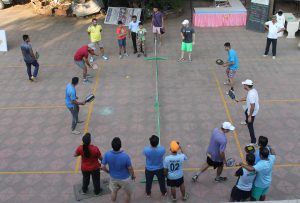
They come with family, play together, enjoy their time and go back home refreshed. Now people don’t get surprised by the name Pickleball. Formerly people used to say,’Oh…whats Pickleball?’ But now they say, ‘Oh, I have played it in gym class, or high school etc.’ So there is the development.
Phil Larsson: It has grown hugely since its inception in 1965. This is due to the widespread adoption of this sport in community centres and among retirement communities. There are organized competitions at local, state and national levels too. As per International Federation of Pickleball (IFP) the game is played by almost 3 million players in the USA. They are expecting a rise of another million by next year. So Pickleball is exploding. And it is moving out of the States in other parts of the world too.
-
Role of organizations in its development…..
Phil Larsson: The organisations in the USA have many ambassador programmes. There are volunteers chosen who work in their city or state for the development of the sport. Yes, many countries have their own organisations. India has All India Pickleball Association (AIPA) that closely works with Internationa Federation for Pickleball (IFP).
Neil Friedenberg: The organisations are keen to involve Pickleball in school curriculum. In the States, most high schools have Pickleball courts, gyms have and clubs have. So it’s quite positive there.
-
Professional aspect of Pickleball……
Neil Friedenberg: Yes, its still very much recreational but on its way to become a professional one. Formerly, senior communities, retired professionals only played this game. But now as families are involved more, Pickleball is exposed to younger generation. So, some years from now, it will be more professional.
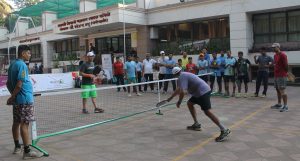
Phil Larsson: The professional level will be achieved in near future and I say that because the game is moving across the globe. Here in India, it has a huge potential. The skill level is very high among the players here. And that’s basically because the game is played by young people. Couple of years back, we have seen some online videos of Indian players. They were then so amateurish. But, my goodness, this year while visiting different clinics and workshops, we have seen some amazing players. They are catching up tremendously and progressing enormously. So this must be happening in some other countries too. There are definitely right people around the globe to take this game forward.
-
Formation of Prolite….
Neil Friedenberg: Initially, there were wood paddles for Pickleball but those paddles were very heavy. In 1984,
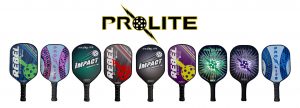
Prolite was formed by an engineer who made a bit of technical approach to the formation of paddles. He first noticed that in tennis there is a ratio between the ball weight and the racquet. He copied this ratio and similarly manufactured Pickleball paddles according to the weight of its ball. This approach in manufacturing the paddles revolutionised the game. We make paddles in such a manner that sportsmen involved in some other racquet game finds it easy to switch here. People with no experience in sports also find it easy to play with Prolite paddles.
Phil Larsson: Everyday, we think to make something different in the interest of Pickleball’s development. We, at Prolite, are always ready to give the best to people. These paddles are unique in shape and the cores are typically made of either nomex, polymer or aluminum honeycomb. And not only paddles, we manufacture grips, bags, balls, nets, apparels- everything needed for this game.
-
Contribution of Prolite in Pickleball…..
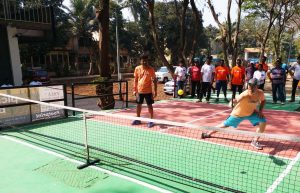
Neil Friedenberg: My father being an exceptional Pickleball player, always wanted to contribute to this game. For our family, it is not just a game, it’s a way of our life. After my father took over Prolite, he had his vision clear. Apart from producing high-quality gears for a variety of player types, he wanted this company to be the ambassador of the game. He called me one day and asked me to inherit the business.
And from that day, I am working towards its development. We support some of the national tournaments in the US. Even regional tournaments come under our ambit. We approach schools, high schools for the spread of the game. We even sometimes donate gear to schools, veterans’ programs and other worthy causes.

Phil Larsson: After USA, there is Canada where Prolite paddles are of high demand. But USA and Canada are not very different as we stay in close proximity, have almost the same culture, speak in a similar fashion. So spreading in Canada was not a big thing for us. But when we decided to move out of our comfort zone, we thought of India. It was mainly because of this person, Manish Rao-a Pickleball fanatic. We connected with him socially and we started our communication some couple of years back. Through his enthusiasm, we saw India as our next step. We want to connect with good people like him who would encourage us to develop this sport in India.

